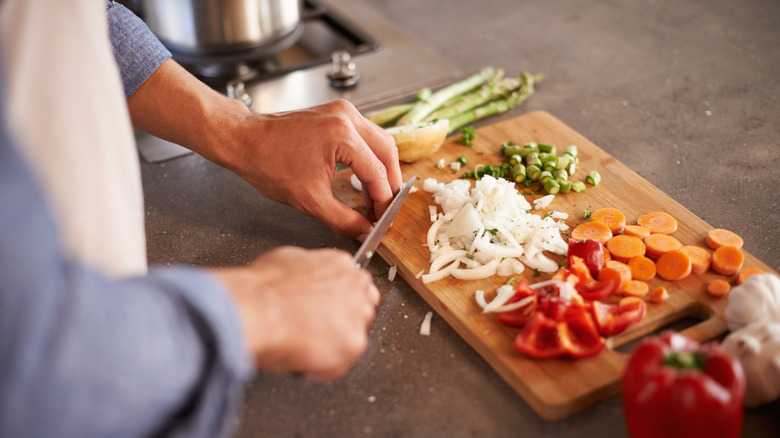Bamboo cutting boards are a popular choice in many kitchens due to their durability, eco-friendliness, and aesthetic appeal. However, one common issue that many kitchen professionals encounter is the shedding of bamboo cutting boards. In this article, we will explore why is my bamboo cutting board shedding and provide insights into how to care for these boards properly.
Understanding the reasons behind this phenomenon will not only help you maintain your cutting board but also ensure that your food preparation remains safe and hygienic.

What Causes Shedding in Bamboo Cutting Boards?
Before diving into solutions, it's essential to understand the factors contributing to shedding.
1. Quality of Bamboo Used
The quality of the bamboo itself significantly impacts the board's performance. Cheaper boards might use lower-quality bamboo, making them more prone to shedding. High-quality bamboo boards are less likely to splinter and shed, giving you better longevity.
2. Moisture Exposure
Bamboo is a natural product that can absorb moisture. When exposed to excessive moisture or humidity, it can swell, causing the fibers to loosen and potentially lead to shedding. Regularly drying your bamboo board after use can help mitigate this issue.
3. Improper Maintenance
Neglecting to maintain your bamboo cutting board can lead to a range of problems, including shedding. Regularly conditioning your board with mineral oil helps protect it from moisture and keep the fibers intact.
4. Frequent Use
Over time, the constant scraping of knives against the board can cause it to wear down, leading to shedding. Ensure that you are using adequate cutting techniques to minimize wear and tear.
Preventing Shedding in Bamboo Cutting Boards
Now that we understand the causes, lets discuss how to prevent shedding.
1. Invest in Quality
Opt for high-quality bamboo cutting boards. Look for boards that are labeled as durable or made from thick strips of bamboo. They will provide a better cutting surface with reduced chances of shedding.
2. Regular Cleaning Practices
After each use, clean your bamboo board with warm water and mild soap. Avoid soaking it, as this can introduce excess moisture to the board. Instead, wipe it down and ensure it's thoroughly dried.
3. Condition Regularly
Applying food-safe mineral oil on your bamboo board every few weeks will help seal it and prevent moisture from seeping into the fibers. This simple step can extend the life of your board and reduce shedding.
4. Use a Dedicated Board
If you often work with particularly sticky or abrasive foods, consider using a dedicated cutting board for those items. This practice can prevent the wear on your bamboo board and help maintain its integrity.
Signs That Your Bamboo Cutting Board Needs Replacement
Sometimes, despite best efforts, bamboo cutting boards can wear down over time. Here are some signs that it's time to replace your board:
1. Deep Grooves
If you notice deep grooves or cuts on your board, it's likely time for a replacement. Bacteria can shelter in these grooves, making the board unsafe for food preparation.
2. Persistent Shedding
Are you consistently experiencing shedding? If the shedding doesn't diminish despite implementing best practices, it might be time to look for a new cutting board.
3. Odor Retention
If your bamboo board starts to retain kitchen odors despite regular cleaning, it could be a sign of degradation in the material. Replacement may be your best option to ensure food safety.
Maintaining Hygiene with Your Bamboo Cutting Board
When dealing with any cutting board, hygiene must be a priority. Heres how to maintain a hygienic environment:
1. Sanitize Regularly
Make sure to sanitize your bamboo cutting board regularly. This can be done using a mixture of vinegar and water or a reliable sanitizer. The hygiene of your cutting board is crucial, especially when switching between raw meats and vegetables.
2. Avoid Cross-Contamination
To avoid cross-contamination, consider using a separate cutting board for meats and another for fruits and vegetables. This simple practice can dramatically reduce the risk of foodborne illness.
3. Check the Surface Regularly
Regularly inspect the surface of your bamboo board for any signs of damage or shedding. Address any issues immediately to maintain hygiene.
Frequency of Replacement and Care
Knowing when to replace and how to care for your bamboo cutting board is key in any professional kitchen setting. Generally, you should assess your cutting board every 12 months, but this can vary based on usage. If you find that regular maintenance, such as oiling and cleaning, is not enough to keep it in good condition, a replacement would be prudent.

FAQs on Bamboo Cutting Board Shedding
1. Can I still use my bamboo cutting board if it is shedding?
While you can continue using it, shedding is a sign of deterioration. It's best to replace it for safety and hygiene reasons.
2. How can I stop a bamboo cutting board from becoming soggy?
Ensure proper drying after washing, and do not soak your board in water. Conditioning it with mineral oil can also help.
3. Are bamboo cutting boards better than plastic ones?
Bamboo cutting boards can be more eco-friendly and offer knife-friendly surfaces, but they require more care than plastic boards. Each type has its pros and cons depending on usage.
For more insightful information on cutting board hygiene, check out this article.
Additionally, if you're interested in personalized cutting boards, you can learn more by visiting personalization tips.
As an Amazon Associate, I earn from qualifying purchases.


























